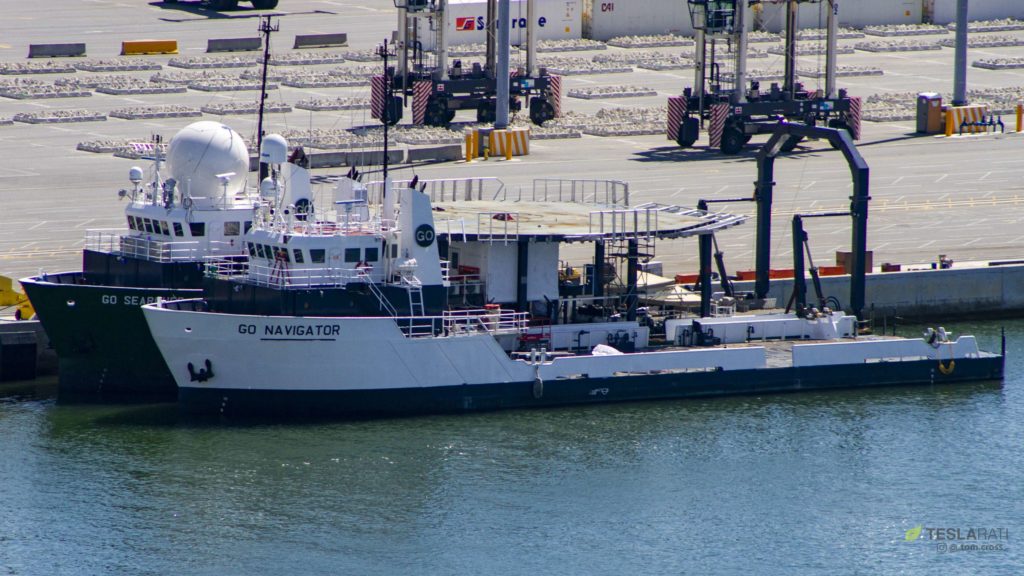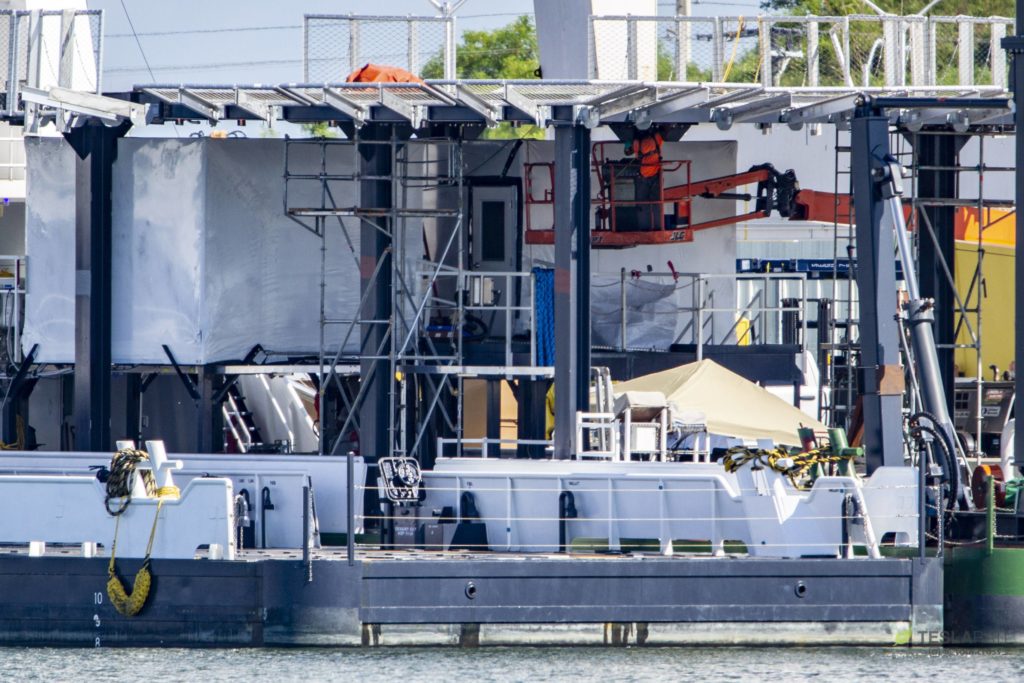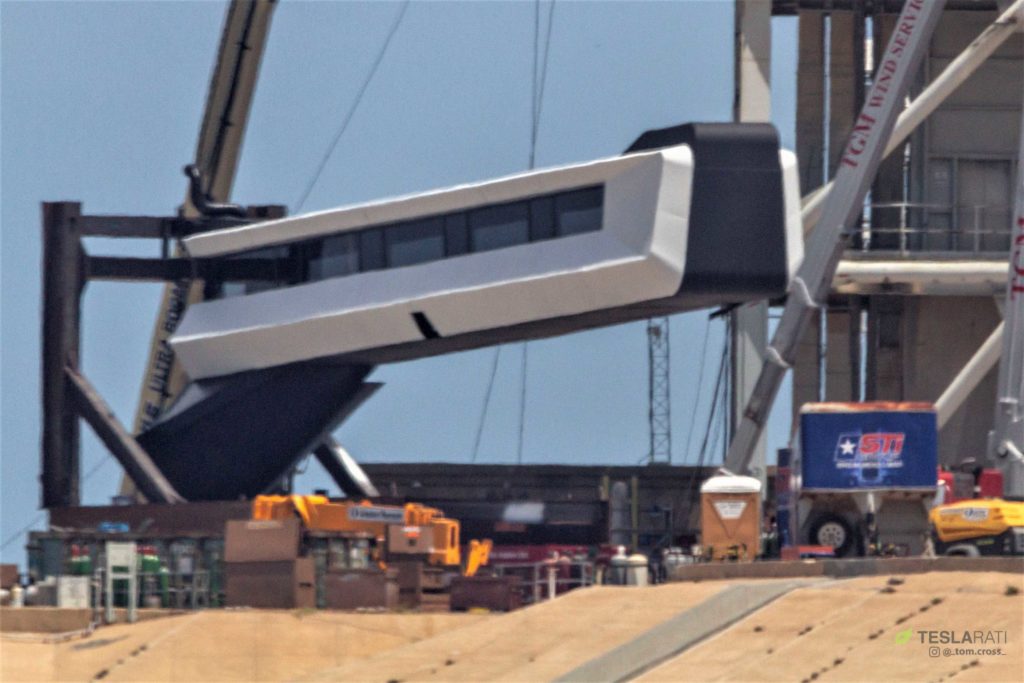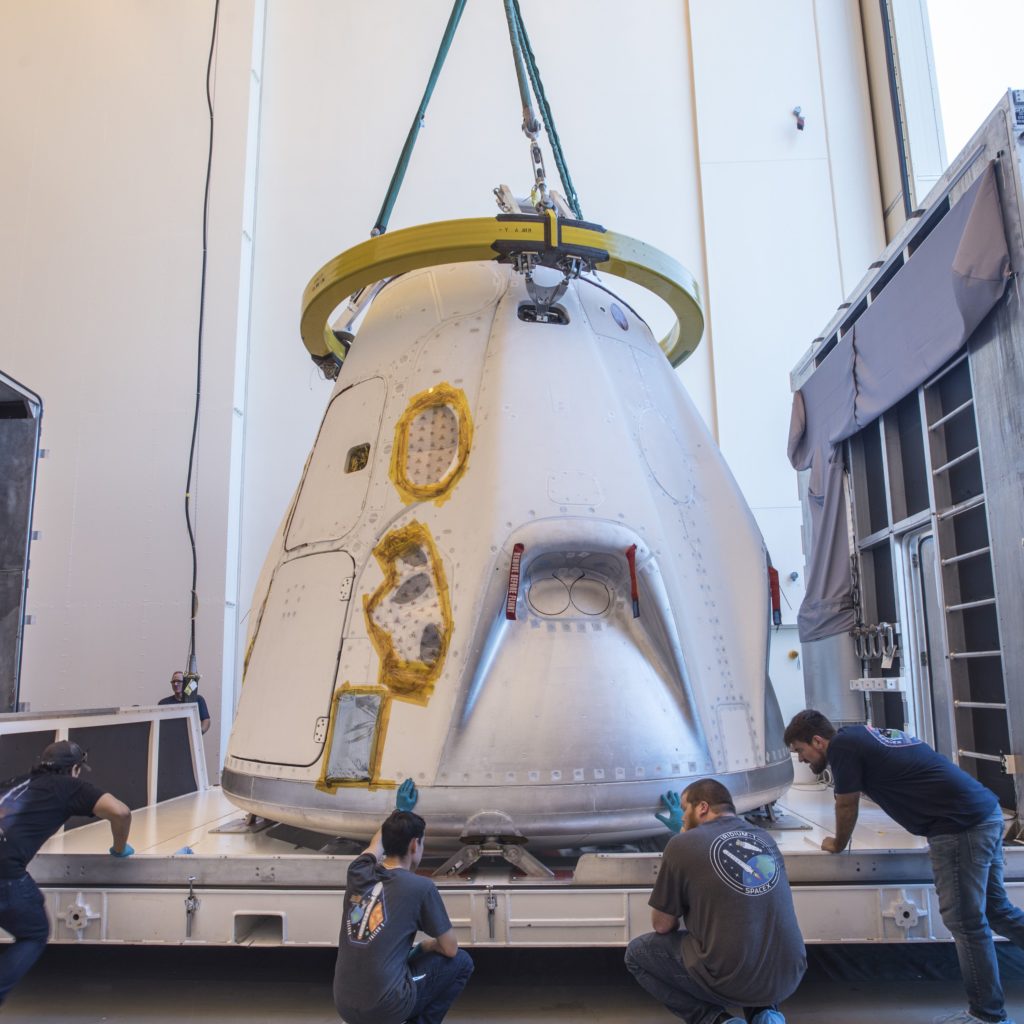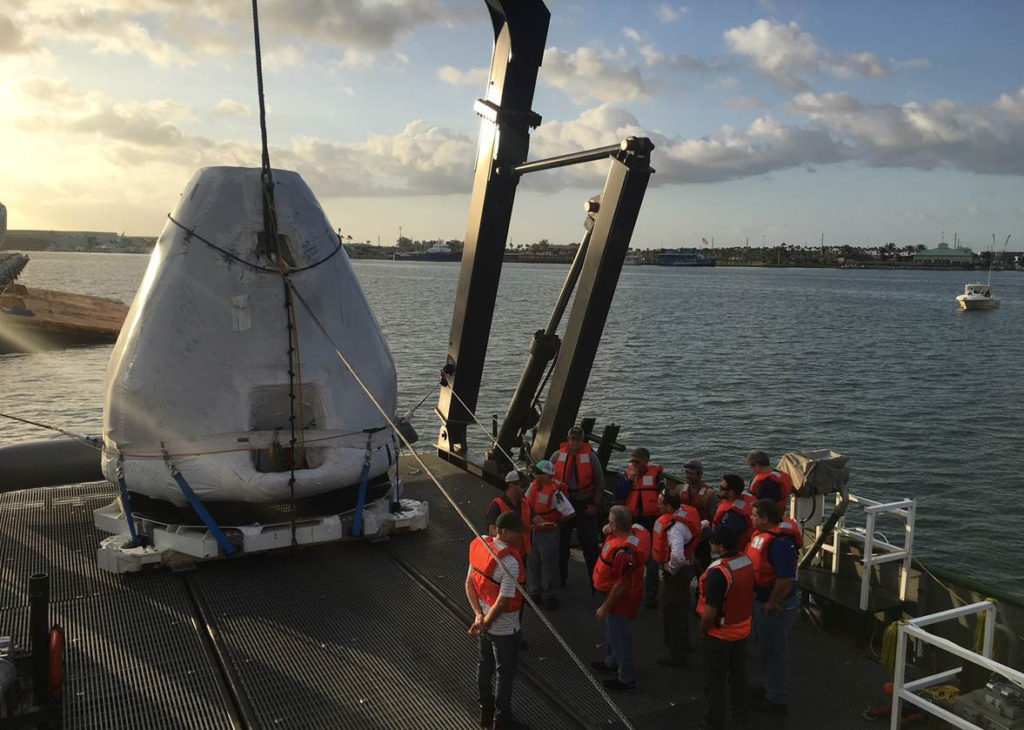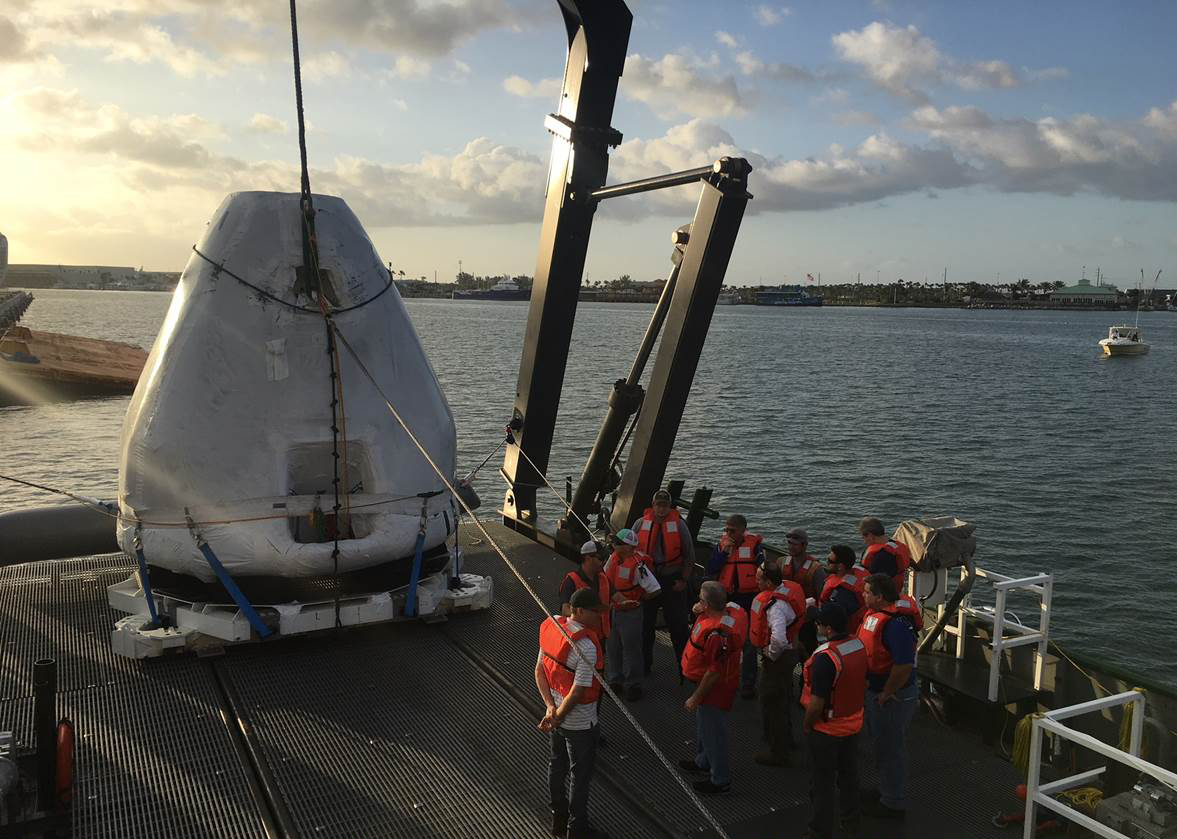
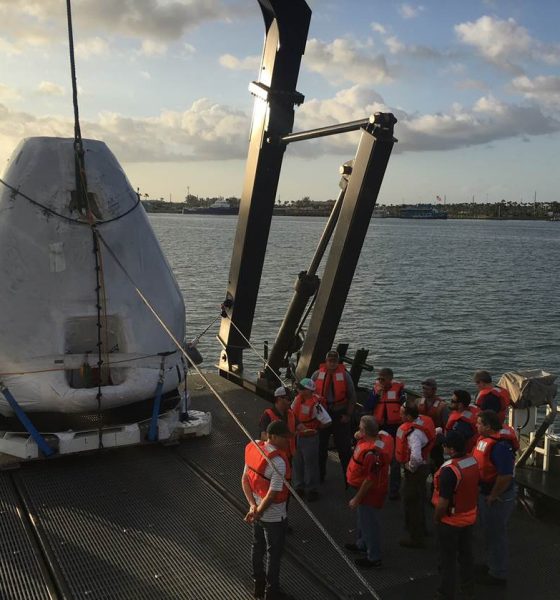
News
SpaceX’s Crew Dragon spacecraft recovery ship gets a helipad prior to launch debut
SpaceX’s primary Crew Dragon recovery vessel GO Searcher is undergoing a number of modifications in preparation for inaugural demonstrations flights of the company’s first human-rated spacecraft.
Most notably, GO Searcher is being fitted with a helipad that will be used to rapidly transfer astronauts from Crew Dragon to Cape Canaveral, where they will go through a number of medical evaluations and debriefings after a six-month stay in orbit aboard the International Space Station (ISS).
- GO Searcher’s new helipad has been rapidly constructed over the last two months. (Tom Cross – 08/12/18)
- A construction worker helps provide a sense of scale for the new pad. (Tom Cross – 08/12/18)
Over the last year or so, the long-time member of SpaceX’s East Coast rocket recovery fleet has been gradually receiving upgrades and conducting sea trials and mockup Dragon recovery tests, performed in concert with the US Air Force and NASA. Once Commercial Crew missions start launching in earnest, GO Searcher will be SpaceX’s sole Crew Dragon spacecraft and astronaut recovery vessel, a new mission that required a number of visible modifications.
Three of those upgrades are especially obvious. First, a large helipad (pictured above) is being constructed on GO Searcher’s deck. That helipad is a critical addition that will enable the rapid transport of astronauts, recovery experts, technicians, doctors, and more (perhaps even press) to or from the ship, which will be at most a few hundred kilometers east of the Florida Coast during Dragon recovery operations, and likely closer to a few tens of kilometers.
.@SpaceX's East Coast #Dragon space capsule recovery vessel, GO Searcher, has finally reemerged after being off-grid past 10-days. Appears to be sporting new hardware. #SpaceXArmada #CrewedDragon 📷: St John's Ship Yard, Palatka FL pic.twitter.com/CPR3P6DoWB
— Cowboy Dan (@CowboyDanPaasch) July 4, 2018
The next most obvious change to GO Searcher is a massive dome, likely dedicated to radar, Crew Dragon communications, or both. That dome and communications/radar array were installed over a several-week maintenance period spent at an East Coast drydocks facility, wrapping up with an early-July return to SpaceX’s Port Canaveral dock space.
Last but not least is the large metal structure at GO Searcher’s rear, a custom-built hydraulic lift designed specifically to lift Crew Dragon onto the recovery vessel’s deck. SpaceX has been extensively testing Dragon recovery operations with that particular rig throughout 2018, working with Commerical Crew astronauts, US Air Force representatives, and NASA officials to ensure that the orchestration of those Dragon and crew recovery operations are down to reflex by the time technicians are called upon to perform the same tasks with real humans and hardware.
- SpaceX has rolled its completed Crew Dragon Access Arm into position and is just days away from installing the sleek arm. 08/16/18 (Tom Cross)
- SpaceX Crew Dragon capsule C203 – then assigned DM-2 – is seen here in August 2018. (Pauline Acalin)
- The first spaceworthy Crew Dragon capsule is already in Florida, preparing for its November 2018 launch debut. The same capsule will be refurbished and reflown as few as three months after recovery. (SpaceX)
- On February 28, SpaceX completed a demonstration of their ability to recover the crew and capsule after a nominal water splashdown in the Atlantic Ocean, just off the coast of Florida. (SpaceX)
- Dragon recovery technicians wrap up a busy day of demonstrations aboard GO Searcher, March 2018. (SpaceX)
SpaceX’s first uncrewed demonstration launch of Crew Dragon is scheduled for no earlier than November 2018, a date President and COO Gwynne Shotwell expressed considerable confidence in earlier this month. That spacecraft may end up landing on a giant inflatable cushion in order to ease refurbishment, as the same capsule will be reflown just a few months later for SpaceX’s in-flight abort test, designed to ensure that astronauts can be safely pulled away from a failing rocket at all points during launch.
Pending a successful uncrewed demo and in-flight abort test, SpaceX could become the first private company in history to launch humans into Earth orbit as early as April 2019.
For prompt updates, on-the-ground perspectives, and unique glimpses of SpaceX’s rocket recovery fleet check out our brand new LaunchPad and LandingZone newsletters!

Investor's Corner
Tesla stock closes at all-time high on heels of Robotaxi progress
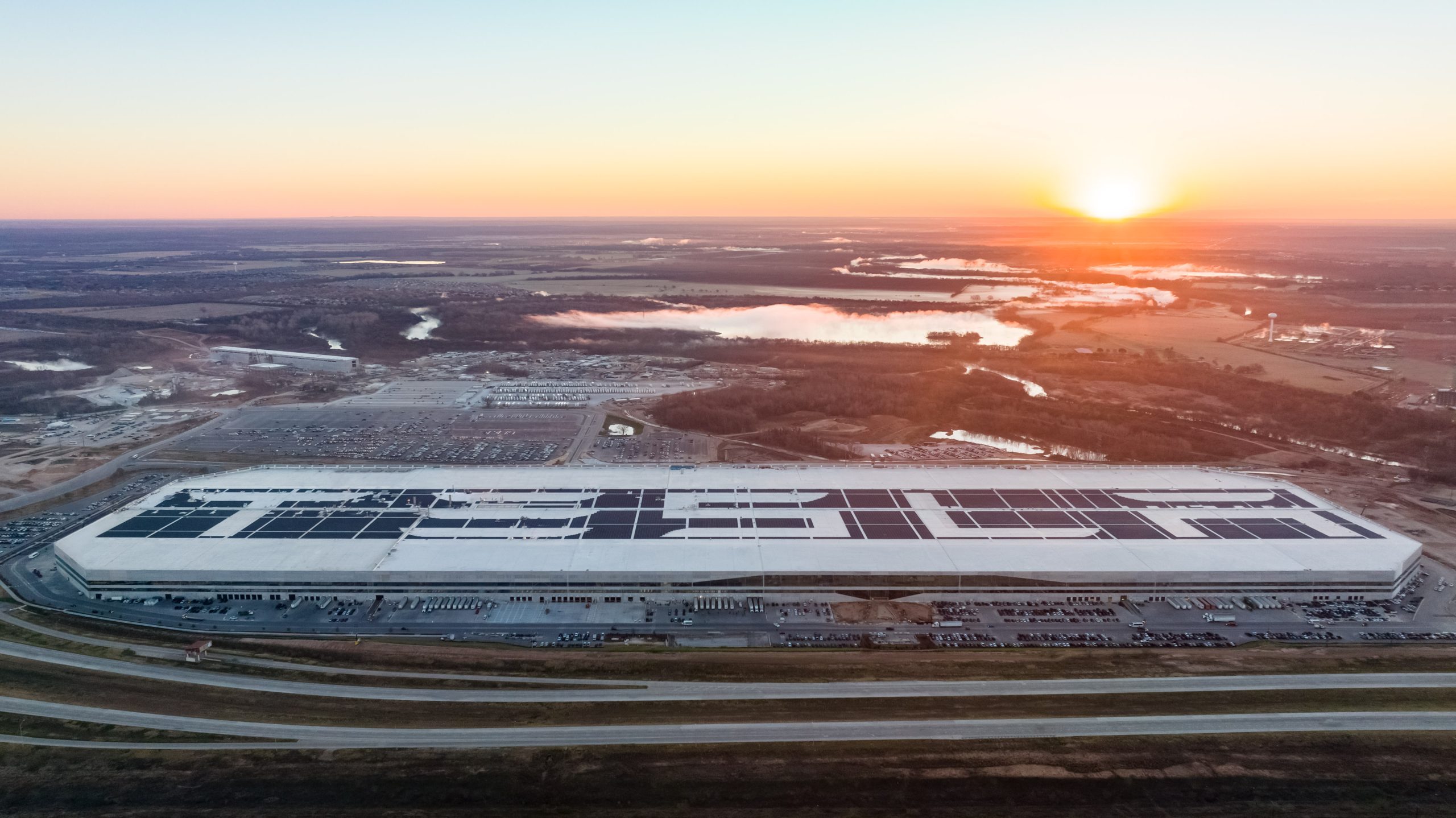
Tesla stock (NASDAQ: TSLA) closed at an all-time high on Tuesday, jumping over 3 percent during the day and finishing at $489.88.
The price beats the previous record close, which was $479.86.
Shares have had a crazy year, dipping more than 40 percent from the start of the year. The stock then started to recover once again around late April, when its price started to climb back up from the low $200 level.
This week, Tesla started to climb toward its highest levels ever, as it was revealed on Sunday that the company was testing driverless Robotaxis in Austin. The spike in value pushed the company’s valuation to $1.63 trillion.
Tesla Robotaxi goes driverless as Musk confirms Safety Monitor removal testing
It is the seventh-most valuable company on the market currently, trailing Nvidia, Apple, Alphabet (Google), Microsoft, Amazon, and Meta.
Shares closed up $14.57 today, up over 3 percent.
The stock has gone through a lot this year, as previously mentioned. Shares tumbled in Q1 due to CEO Elon Musk’s involvement with the Department of Government Efficiency (DOGE), which pulled his attention away from his companies and left a major overhang on their valuations.
However, things started to rebound halfway through the year, and as the government started to phase out the $7,500 tax credit, demand spiked as consumers tried to take advantage of it.
Q3 deliveries were the highest in company history, and Tesla responded to the loss of the tax credit with the launch of the Model 3 and Model Y Standard.
Additionally, analysts have announced high expectations this week for the company on Wall Street as Robotaxi continues to be the focus. With autonomy within Tesla’s sights, things are moving in the direction of Robotaxi being a major catalyst for growth on the Street in the coming year.
Elon Musk
Tesla needs to come through on this one Robotaxi metric, analyst says
“We think the key focus from here will be how fast Tesla can scale driverless operations (including if Tesla’s approach to software/hardware allows it to scale significantly faster than competitors, as the company has argued), and on profitability.”
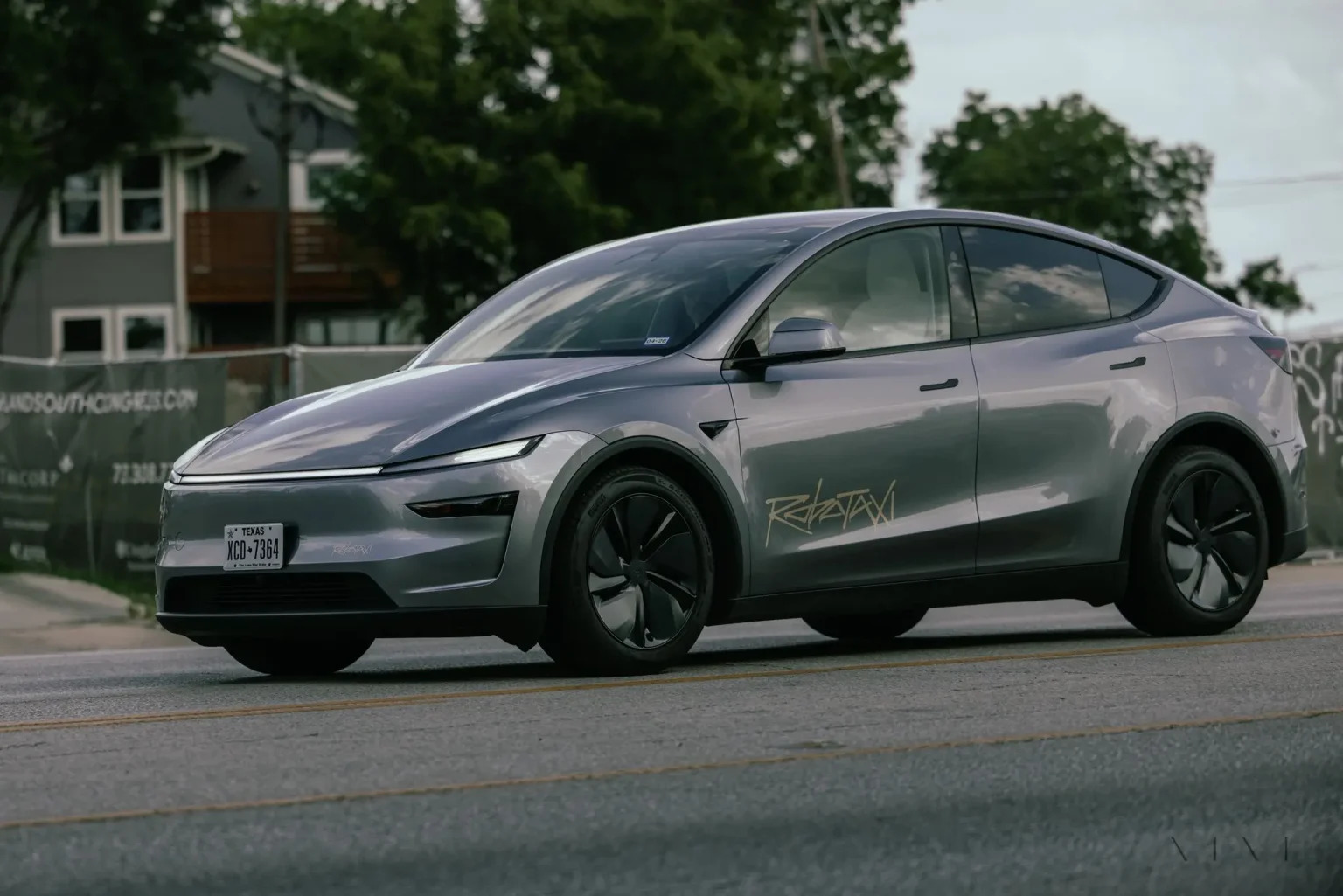
Tesla needs to come through on this one Robotaxi metric, Mark Delaney of Goldman Sachs says.
Tesla is in the process of rolling out its Robotaxi platform to areas outside of Austin and the California Bay Area. It has plans to launch in five additional cities, including Houston, Dallas, Miami, Las Vegas, and Phoenix.
However, the company’s expansion is not what the focus needs to be, according to Delaney. It’s the speed of deployment.
The analyst said:
“We think the key focus from here will be how fast Tesla can scale driverless operations (including if Tesla’s approach to software/hardware allows it to scale significantly faster than competitors, as the company has argued), and on profitability.”
Profitability will come as the Robotaxi fleet expands. Making that money will be dependent on when Tesla can initiate rides in more areas, giving more customers access to the program.
There are some additional things that the company needs to make happen ahead of the major Robotaxi expansion, one of those things is launching driverless rides in Austin, the first city in which it launched the program.
This week, Tesla started testing driverless Robotaxi rides in Austin, as two different Model Y units were spotted with no occupants, a huge step in the company’s plans for the ride-sharing platform.
Tesla Robotaxi goes driverless as Musk confirms Safety Monitor removal testing
CEO Elon Musk has been hoping to remove Safety Monitors from Robotaxis in Austin for several months, first mentioning the plan to have them out by the end of 2025 in September. He confirmed on Sunday that Tesla had officially removed vehicle occupants and started testing truly unsupervised rides.
Although Safety Monitors in Austin have been sitting in the passenger’s seat, they have still had the ability to override things in case of an emergency. After all, the ultimate goal was safety and avoiding any accidents or injuries.
Goldman Sachs reiterated its ‘Neutral’ rating and its $400 price target. Delaney said, “Tesla is making progress with its autonomous technology,” and recent developments make it evident that this is true.
Investor's Corner
Tesla gets bold Robotaxi prediction from Wall Street firm
Last week, Andrew Percoco took over Tesla analysis for Morgan Stanley from Adam Jonas, who covered the stock for years. Percoco seems to be less optimistic and bullish on Tesla shares, while still being fair and balanced in his analysis.
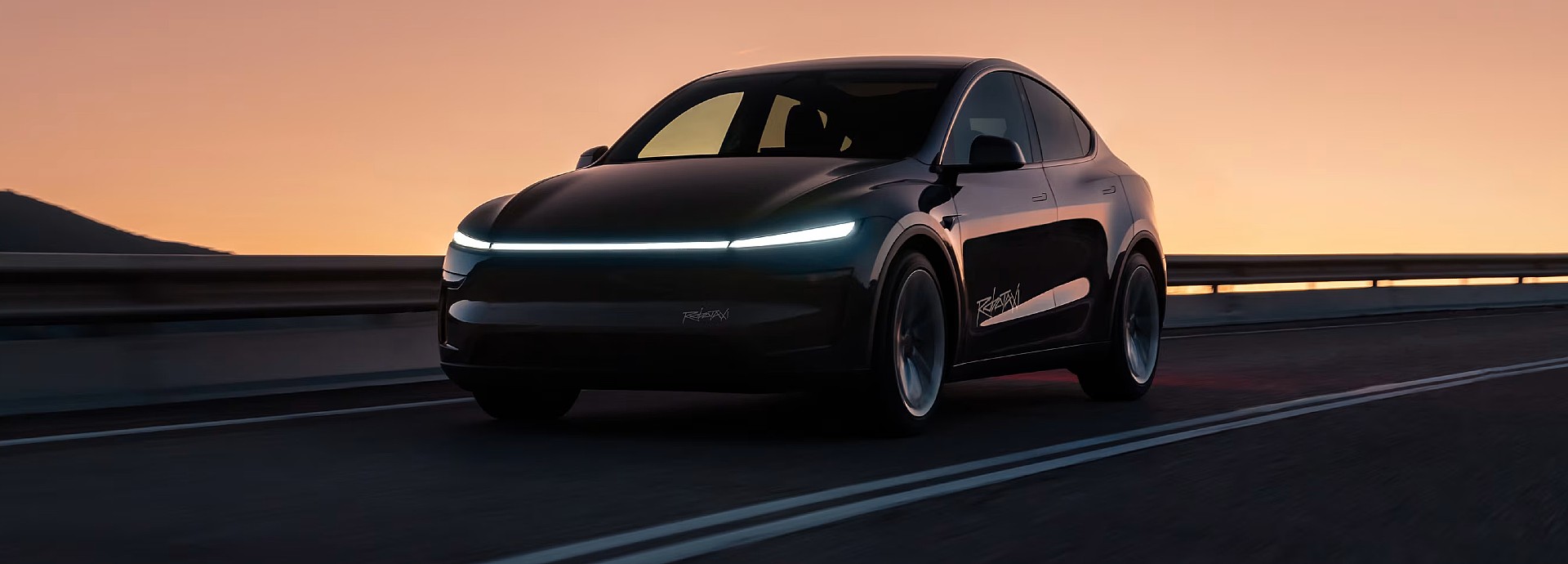
Tesla (NASDAQ: TSLA) received a bold Robotaxi prediction from Morgan Stanley, which anticipates a dramatic increase in the size of the company’s autonomous ride-hailing suite in the coming years.
Last week, Andrew Percoco took over Tesla analysis for Morgan Stanley from Adam Jonas, who covered the stock for years. Percoco seems to be less optimistic and bullish on Tesla shares, while still being fair and balanced in his analysis.
Percoco dug into the Robotaxi fleet and its expansion in the coming years in his latest note, released on Tuesday. The firm expects Tesla to increase the Robotaxi fleet size to 1,000 vehicles in 2026. However, that’s small-scale compared to what they expect from Tesla in a decade.
Tesla expands Robotaxi app access once again, this time on a global scale
By 2035, Morgan Stanley believes there will be one million Robotaxis on the road across multiple cities, a major jump and a considerable fleet size. We assume this means the fleet of vehicles Tesla will operate internally, and not including passenger-owned vehicles that could be added through software updates.
He also listed three specific catalysts that investors should pay attention to, as these will represent the company being on track to achieve its Robotaxi dreams:
- Opening Robotaxi to the public without a Safety Monitor. Timing is unclear, but it appears that Tesla is getting closer by the day.
- Improvement in safety metrics without the Safety Monitor. Tesla’s ability to improve its safety metrics as it scales miles driven without the Safety Monitor is imperative as it looks to scale in new states and cities in 2026.
- Cybercab start of production, targeted for April 2026. Tesla’s Cybercab is a purpose-built vehicle (no steering wheel or pedals, only two seats) that is expected to be produced through its state-of-the-art unboxed manufacturing process, offering further cost reductions and thus accelerating adoption over time.
Robotaxi stands to be one of Tesla’s most significant revenue contributors, especially as the company plans to continue expanding its ride-hailing service across the world in the coming years.
Its current deployment strategy is controlled and conservative to avoid any drastic and potentially program-ruining incidents.
So far, the program, which is active in Austin and the California Bay Area, has been widely successful.
